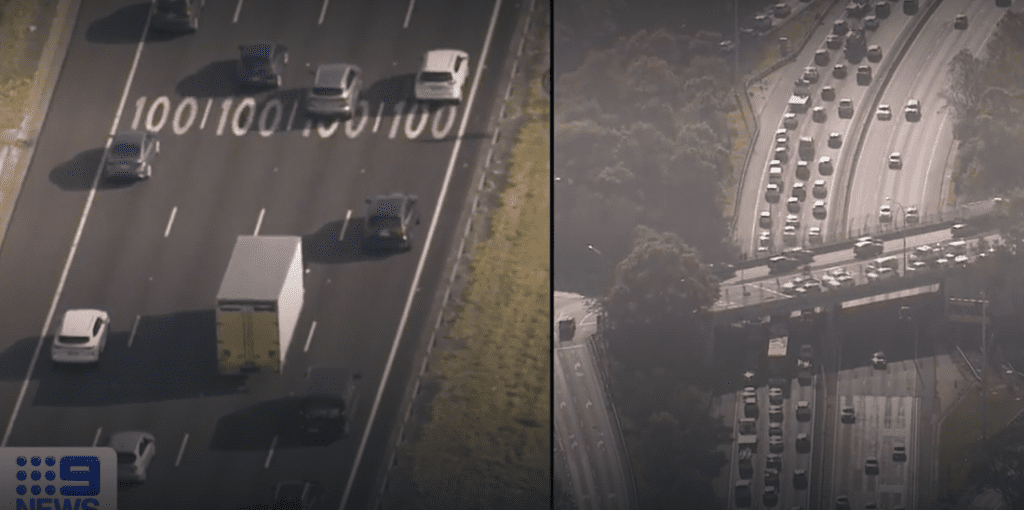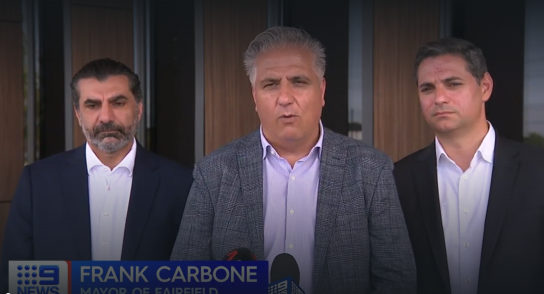

If you were watching the 6pm Channel 9 news bulletin on Tuesday you may have spotted the Campbelltown mayor, George Greiss, standing next to two other South West Sydney mayors.
The “story’’ was that the mayors were demanding the state government reimburse motorists who were stuck in a major traffic jam earlier in the day because a sprinkler test near the M5 had gone badly wrong.
What you may have also noticed was that the Campbelltown mayor – that’s him on the left – did not get to say boo during the broadcast, with the other two doing all the talking.
That’s not because Mayor Greiss had nothing to say, but because what he said about the issue – which was that the incident “starkly illustrates our residents’ broader challenges’’ obviously wasn’t sensational enough for the TV network and ended up on the cutting room floor.
Yesterday, he sent the South West Voice a media release with his full statement regarding the single event traffic congestion incident on the M5.
“This traffic ordeal underscores the immediate need to address two critical issues: the need for more infrastructure and the unequal distribution of job opportunities, particularly in South Western Sydney,’’ Mayor Greiss said.
“This gridlock was an emotional reminder of our region’s dependence on private vehicles and toll road expenses that Campbelltown residents bear daily when navigating the M7, M8, and M5 to get towork.’’
According to the Australian Automobile Association’s transport affordability index, the average annual vehicle costs in Sydney amount to around $25,600, with fuel and tolls constituting 39 percent.
“These costs disproportionately impact Campbelltown residents, who are often burdened with multiple vehicles and longer commutes,’’ Mayor Greiss said.
It seems Campbelltown residents own 96,900 vehicles: the latest Transport for NSW survey reveals they have no other option.
The survey showed that bus travel times within the Local Government Area are nearly double that of private cars (buses averaging 3 min 15 sec per kilometre compared with driver vehicles averaging 1 minute 43 seconds per kilometre).
Thirty-five percent of residents live more than 400 metres away from a reliable public transportation service, which severely restricts transportation options beyond private cars.
“As discussions around increased housing in low-density suburban areas accelerate, we must consider our city’s challenges,’’ says Mayor Greiss.
“The government must prioritise the development of public transport infrastructure and the creation of local jobs to accommodate the growing population of Campbelltown and South Western Sydney.
“The unchecked growth of our population without concurrent local job creation and sustainable public transport development will disadvantage current and future residents,’’ he said.
